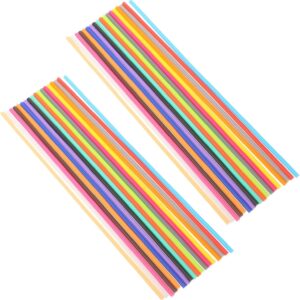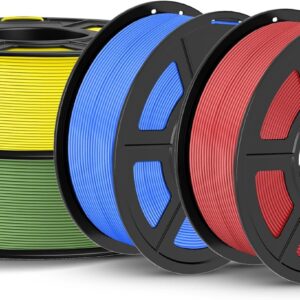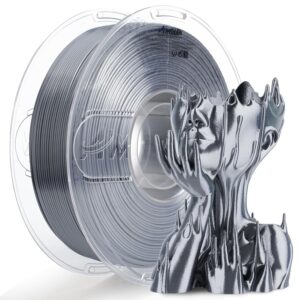Researchers at the King Abdullah University of Science and Technology (KAUST) have developed a new method for 3D printing photonic crystal fibers – a special type of optical fiber.
For the project, the team constructed a 3D printer specially developed for SLA, with which the scientists could adapt their optical fibers with previously impossible internal geometries. Similar to any resin-based system, it cures photopolymers layer by layer into solid pieces, but offers “unparalleled ease and precision” while producing fiber structures at speeds much faster than traditional manufacturing processes.
The co-authors of the study, Andrea Bertoncini and Carlo Liberale, print 3D optical fibers in the laboratory. Photo via KAUST.
What are photonic crystal fibers?
Fiber optic technology can transmit information at the speed of light. As such, it is the driving force behind a whole range of modern technologies, including medical imaging equipment, military communications systems, and of course, high-speed Internet.
Photonic crystal fibers (PCF) are a subclass of optical fibers that originated at the University of Bath in 1996. PCFs are special in that they have multiple internal channels that run the length of the fiber. The channels act like almost perfect mirrors and improve the light capture and long-term propagation properties of the fibers. Ultimately, this means a faster transfer rate and a reduction in information loss.
“With photonic crystal fibers, you can confine light in a very small space and thus increase the optical interaction,” explains Andrea Bertoncini, co-author of the study. “As a result, the fibers can massively reduce the propagation distance that is required to implement certain optical functions such as polarization control or wavelength division.”
 Cross-sectional areas of various 3D printed PCFs. Image via KAUST.
Cross-sectional areas of various 3D printed PCFs. Image via KAUST.
Using 3D Printing to Change Optical Properties
The primary method of adjusting the optical properties of a PCF is to change its cross-sectional geometry. This is done in the initial manufacturing phase, where the fibers are traditionally drawn from a pool of fused quartz glass. Factors that can affect the properties of a fiber include the size and shape of the hollow chambers, as well as the cross-sectional pattern itself.
Since the diameter of an optical fiber is often a fraction of a millimeter, the samples are usually first extracted in enlarged versions of the fibers. While this works, it puts limits on the number of geometries that are possible due to factors such as gravity and surface tension.
“Photonic crystal fibers provide scientists with a kind of tuning knob to control the light guide properties through geometric design,” adds Bertoncini. “However, people did not take full advantage of these properties because it was difficult to create arbitrary hole patterns using conventional methods. The surprising thing is that you can now make them using our approach. You design the 3D model, you print it and that’s it. “
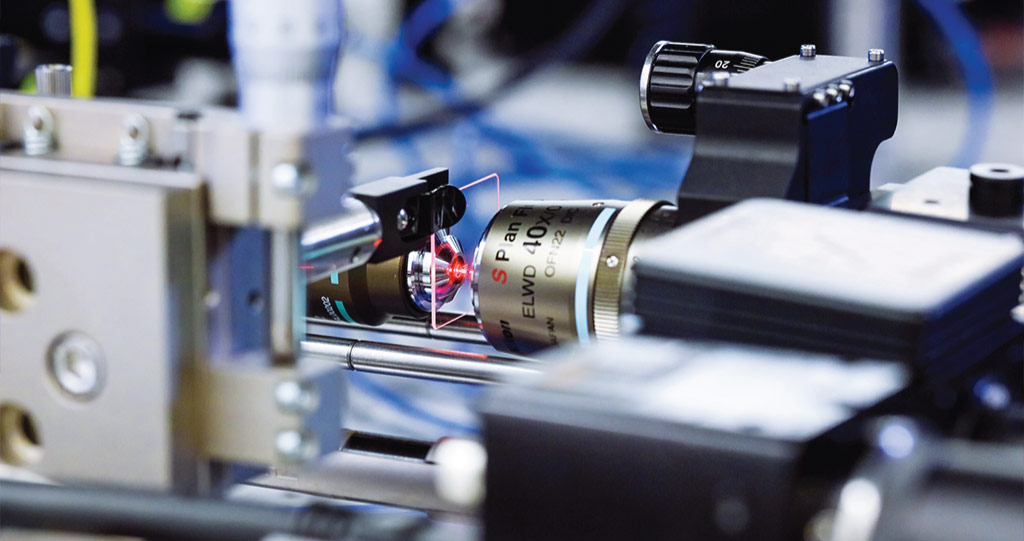 The specially developed KAUST 3D printer uses UV lasers to manufacture optical fibers. Photo via KAUST.
The specially developed KAUST 3D printer uses UV lasers to manufacture optical fibers. Photo via KAUST.
By 3D printing the PCFs, the KAUST team was able to overcome these geometric limitations. User-defined cross-sectional areas were programmed directly into the fiber layers themselves, so that enlarged versions no longer had to be used.
According to Bertoncini, the novel process also enables the creation of multiple cross-sectional areas along a single optical fiber – a feature that would otherwise be impossible. The technique can be used to split a beam of light into its individual polarization components, much like a prism does with a beam of white light. Multiple cross-sectional areas can also be used to vary the focus of a light beam as needed, paving the way for an entirely new method of manufacturing high-speed, highly customizable optical fibers.
Further details of the study can be found in the article entitled “3D Printed Waveguides Based on Photonic Crystal Fiber Designs for Complex Photonic Fiber End Devices”. It is written jointly by Andrea Bertoncini and Carlo Liberale.
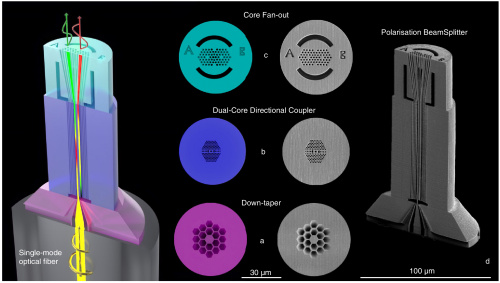 A schematic showing multiple cross-sectional areas incorporated into a single optical fiber. Image via KAUST.
A schematic showing multiple cross-sectional areas incorporated into a single optical fiber. Image via KAUST.
3D printing for optical applications
3D printing of optical devices is an innovative sector in additive manufacturing. Luxexcel, a specialist in 3D-printed eyeglass lenses, recently worked with the waveguide manufacturer WaveOptics to print prescription-only 3D glasses with augmented reality (AR) functionality. The upcoming lens modules will combine the lenses from Luxexcel with the waveguides and light projectors from WaveOptics, thus offering intelligent technology in a normal form factor that can be integrated into commercially available eyeglass frames.
Elsewhere, engineers from the OEM Nanoscribe 3D printer and the University of Freiburg recently worked together to 3D print high-resolution glass-silica microstructures using two-photon polymerization (2PP). The optics are made from a vitreous resin called “Glassomer” and have a surface roughness of only 6 nanometers, much less than the 40-200 nanometers seen in many conventionally made glass parts. The scientists believe their 3D printing process could be used to manufacture the next generation of micro-optics with potential applications in medical imaging systems.
Subscribe to the 3D printing industry newsletter for the latest news on additive manufacturing. You can also stay connected by following us on Twitter and liking us on Facebook.
Looking for a career in additive manufacturing? Visit 3D Print Jobs for a selection of roles in the industry.
The image shown shows a range of highly custom 3D printed optical fibers. Photo via KAUST.





